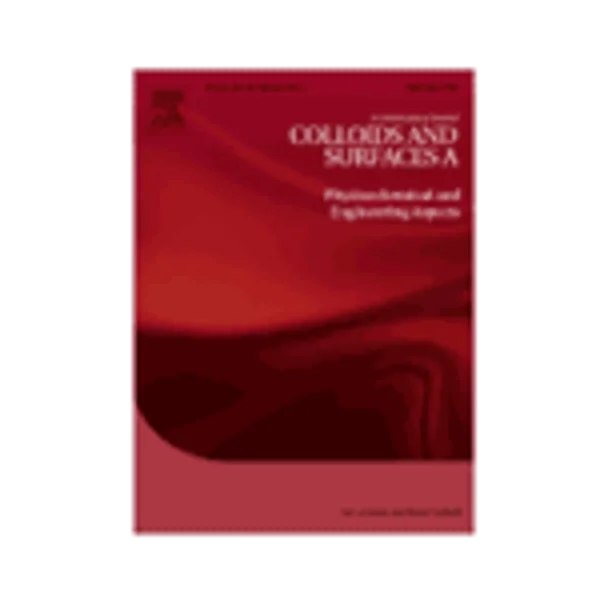-
surface charge characterization of metal oxides by potentiometric acid–base titration, revisited theory and experiment
جزئیات بیشتر مقاله- تاریخ ارائه: 1392/07/24
- تاریخ انتشار در تی پی بین: 1392/07/24
- تعداد بازدید: 914
- تعداد پرسش و پاسخ ها: 0
- شماره تماس دبیرخانه رویداد: -
the increased interest in architecting nanocomposites and in clarifying their impact on health and environment necessitates a standardized method of surface characterization, because the behaviour of nanoparticles is governed largely by their surface free energy and interfacial chemistry. potentiometric acid–base titration has been used for decades to determine surface charge density of oxides, tremendously useful in understanding and modelling oxide/electrolyte interfaces. the method has solid theoretical and experimental foundation. yet, published values of the point of zero charge (pzc) of chemically identical oxides scatter widely: the deviation of seven units of ph is the rule, rather than an exception. the pzc must reflect the inherent charging behaviour, linked exclusively to the protonation, and determined by the chemistry of the oxides. assignment of pzc (just like assignment of equilibrium constant of any chemical reaction) requires strict conditions and consistent protocol. we present here such a protocol, and some examples of application. the protocol leads through the basic steps: ph buffer calibration, proton concentration calibration in the background electrolytes, and titrations of oxides. built-in tests help to eliminate artificial side effects simultaneously from the measurement of ph and from the oxide/electrolyte interfacial equilibria. although these may seem self-evident, literature survey proves the need to go back to basics in order to obtain precise, reliable and comparable ph-dependent charging of oxides. it is most general that the oxides contain some unrecognized surface impurities and have a strongly ph-dependent dissolution. these distort the results of titrations; their effect increases with decreasing particle size and can become dominant for nanoparticles. the protocol presented here contains the necessary feedback loops to easily recognize and exclude these side effects.
مقالات جدیدترین رویدادها
-
استفاده از تحلیل اهمیت-عملکرد در ارائه الگوی مدیریت خلاقیت سازمانی و ارائه راهکار جهت بهبود
-
بررسی تاثیر ارزش وجوه نقد مازاد بر ساختار سرمایه شرکت های پذیرفته شده در بورس اوراق بهادار تهران
-
بررسی تأثیر سطح افشای ریسک بر قرارداد بدهی شرکت های پذیرفته شده در بورس اوراق بهادار تهران
-
بررسی تأثیر رتبه بندی اعتباری مبتنی بر مدل امتیاز بازار نوظهور بر نقد شوندگی سهام با تأکید بر خصوصی سازی شرکت ها
-
تأثیر آمیخته بازاریابی پوشاک ایرانی بر تصویر ذهنی مشتری پوشاک ایرانی (هاکوپیان)
-
تصویر منصب قضا در آثار شاعران قرن پنجم و ششم هجری
-
تاثیر استفاده از پربیوتیک و پروبیوتیک در جیره غذائی بر عملکرد مرغان تخم گذار، فراسنجه های بیوشیمیایی و فیزیولوژی خون و صفات کیفی تخم مرغ
-
اثر درمانهای پروتز ثابت بر سلامت نسوج پریودنتال
-
آثار "سیطره ی دانش جهانی" در فرآیندهای آموزشی کشور، آسیب ها و راهبردها
-
chitosan/bioactive glass nanoparticle composite membranes for periodontal regeneration
مقالات جدیدترین ژورنال ها
-
مدیریت و بررسی افسردگی دانش آموزان دختر مقطع متوسطه دوم در دروان کرونا در شهرستان دزفول
-
مدیریت و بررسی خرد سیاسی در اندیشه ی فردوسی در ادب ایران
-
واکاوی و مدیریت توصیفی قلمدان(جاکلیدی)ضریح در موزه آستان قدس رضوی
-
بررسی تاثیر خلاقیت، دانش و انگیزه کارکنان بر پیشنهادات نوآورانه کارکنان ( مورد مطالعه: هتل های 3 و 4 ستاره استان کرمان)
-
بررسی تاثیر کیفیت سیستم های اطلاعاتی بر تصمیم گیری موفق در شرکتهای تولیدی استان اصفهان (مورد مطالعه: مدیران شرکتهای تولیدی استان اصفهان)
-
کودک و کودکی از منظر فلسفه و ادبیات
-
بررسی عوامل خودکشی و اقدام به خودکشی دراستان کرمانشاه
-
علل و دلایل خاص ورشکستگی کسب و کارهای کوچک
-
بررسی تأثیر تحصیلات مدیران بر نگهداری وجوه نقد و ارزش مازاد وجوه نقد شرکت های بیمه ای در بورس اوراق بهادار تهران
-
آثار تلف عین مستاجره بر اماکن تجاری




سوال خود را در مورد این مقاله مطرح نمایید :